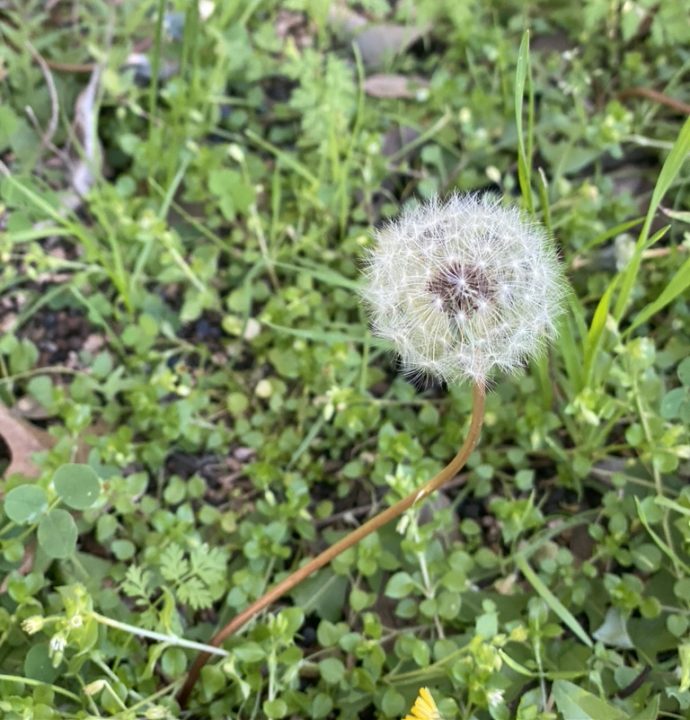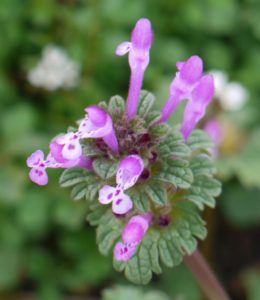Why are there weeds in my Lawn? What can I do about it?
Why are there weeds in my yard, and what can I do about it? We are going to tackle this in three steps:
- Identification
- Eradication
- Maintenance
But before we get into the details, let’s start with some basics upfront.
We like to think about the health of a yard like the health of the human body. Our physical health is a reflection of many things: food, hydration, stress, exercise, Netflix consumption, etc. Our health is not JUST food, JUST exercise, or any other one thing. One thing can cripple our health, but one thing cannot ensure health.
The same applies to your yard. Turf health is a reflection of many things: food (fertilization, top dressing), hydration (irrigation), stress (traffic, kids, pets, dance parties, compaction), exercise (consistent, proper mowing), “Netflix consumption” (too much sun or too much shade), etc. Any one of these things can weaken or even kill a yard if it gets out of hand, but you need all of these things to work in tandem to have a healthy yard.
The last point on this analogy: just like we can’t exercise really hard once or eat really well for a week and think we are good for the season, we cannot do one big thing to our yard and then wonder why it is suffering three months later. Just like everything in life (health, relationships, finances, dance moves) you have to do the consistent, hard work routinely over an extended period of time to get the results. There is no silver bullet — in life or in lawn care.
This brings us to weeds in your yard. “Why are there weeds in my Lawn?!”
1. Identifying weeds in your yard
This is not meant to be exhaustive, but we will highlight the most common central texas weeds we see. If you want a huge list because you want to play weed bingo or something like that, I recommend this site (Aggies love agriculture).
We generally break weeds down into two groups – grassy and broadleaf. We do this for three reasons. 1) It helps with identification. 2) Treatment varies. 3) We want to :).
Broad Leaf Weeds
Dandelion – Dandelions are a broadleaf simple perennial. Interestingly, they got their name from a French “dent de lion“ (lion’s tooth) named for the shape of their leaves. Originally from Europe and Asia, they came to North America as a food crop. They are difficult to remove and resilient in drought and flood climates. They prefer moisture and sun but can thrive in shade once established. Some people argue that it can be used for medicinal purposes. A single plant can produce up to 5000 seeds per year. Kids — and adults — love to spread these seeds. Often times this is the answer to “why are there weeds in my lawn?”
Henbit – Henbit is a broadleaf winter annual. They tend to thrive where lawns are at their weakest (bare/thinning areas and edges). Fun fact: these weeds are actually a member of the mint family. They sprout attractive flowers, but don’t be fooled, they can become a real pest in the winter months if not properly controlled. A healthy Henbit is capable of producing hundreds of seeds. Since they are winter annuals, the application of pre-emergent herbicide is most effective during fall.
Grassy Weeds
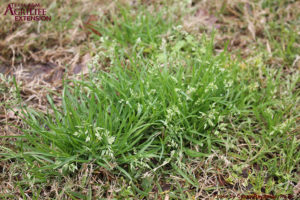
Poa Annua – Know more commonly as Annual Bluegrass, this is a winter annual. Poa Annua beings to emerge around the early fall months when the temperature is around the 60s but will turn brown and die once the summer heat picks up. Herbicide control is trickier due to the variance in germination, and it varies greatly on the location’s temperature in a given year. This grass thrives in areas that are cool and moist.
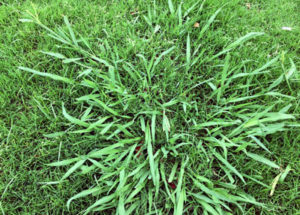
Dalis Grass – Dallisgrass is a perennial grass. It is in the spreading perennial subcategory, meaning once established, this weed can form extensive root systems that spawn several new weeds. Dallisgrass was first introduced to the U.S. in the late 1800s and is common through the south/southeast regions of the country. It got its name from A.T. Dallis, a farmer in the 19th century, who loved planting the grass. Best practices for controlling Dallisgrass involve several treatments of post-emergent herbicide during the fall months while the weed is still actively growing.
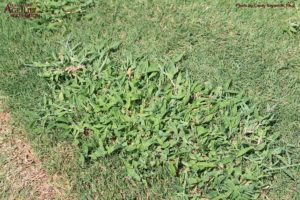
Crabgrass – Crabgrass is a summer annual. There are two common forms of crabgrass in Central Texas: Large Crabgrass and Smooth Crabgrass, differentiated by their appearance. It is a nuisance in lawns unless you have cattle — for which it is a useful forage. Since most of us don’t have cattle, this weed isn’t too useful.
2. Eradicaticating the weeds in your yard
Classic method #1 (popular for millennia) pull them out by hand.
Classic method #2 (also popular for millennia) use a tool.
The modern method that hasn’t been around that long (compared to the classic methods): use chemicals.
Chemicals are basically magic! The chemical wizards have even developed different methods to target specific plants at specific times of year.
We recommend that you use a program specifically designed for your climate, turf type, seasons, and soil type. At Top Choice, we partner with our good friends over at Emerald Lawns. They have a 9-step program that accomplishes all of these things. You can read more about it here. Notice that their program treats weeds, but it also is designed to improve turf health. It kills weeds, but it also feeds the turf.
3. Maintaining a healthy yard to prevent weeds
Why is a healthy lawn so important? Healthy turf helps to choke out weeds. Your body fights viruses best when you are healthy, and the same goes for turf. If the turf is thriving, the weeds won’t have anywhere to grow. If the turf is weak or sparse, weeds will have an easier time taking a foothold.
Remember what we wrote up top: even chemical treatment is not a silver bullet. This is a consistent, routine, ongoing process. As your turf gets healthier, it will get easier. But you are never done. Not sure if you are a Bible reader, but one of the first things in there says, “It (the ground) will produce thorns and thistles”… we aren’t going to win this war. It is always an ongoing fight.
Often, the question, “Why are there weeds in my lawn?” is just the beginning of a bigger conversation. Know that there is hope, but it will take some work up front and consistent maintenance thereafter, including:
- A consistent weed treatment and fertilization program: Not just one application per year. You want to do this year-round to treat and prevent weeds.
- Proper mowing: Routine, proper height, appropriately timed intervals (ideally weekly), sharp blades … These are all aspects of good lawn care. Many weeds grow faster than grass and will hate getting cut routinely. Weaker weeds = easier to eradicate. Learn more here.
- Aeration: Compaction makes it hard for roots to develop. Read more here.
- Topdressing: Good soil is essential for healthy turf. Topdressing up to twice a year can be important. Read more here.
- Hire a really cool team to take care of your yard: This has been scientifically proven to get results. It is magic.
Call us. We would love to answer “Why are there so many weeds in my lawn?”


